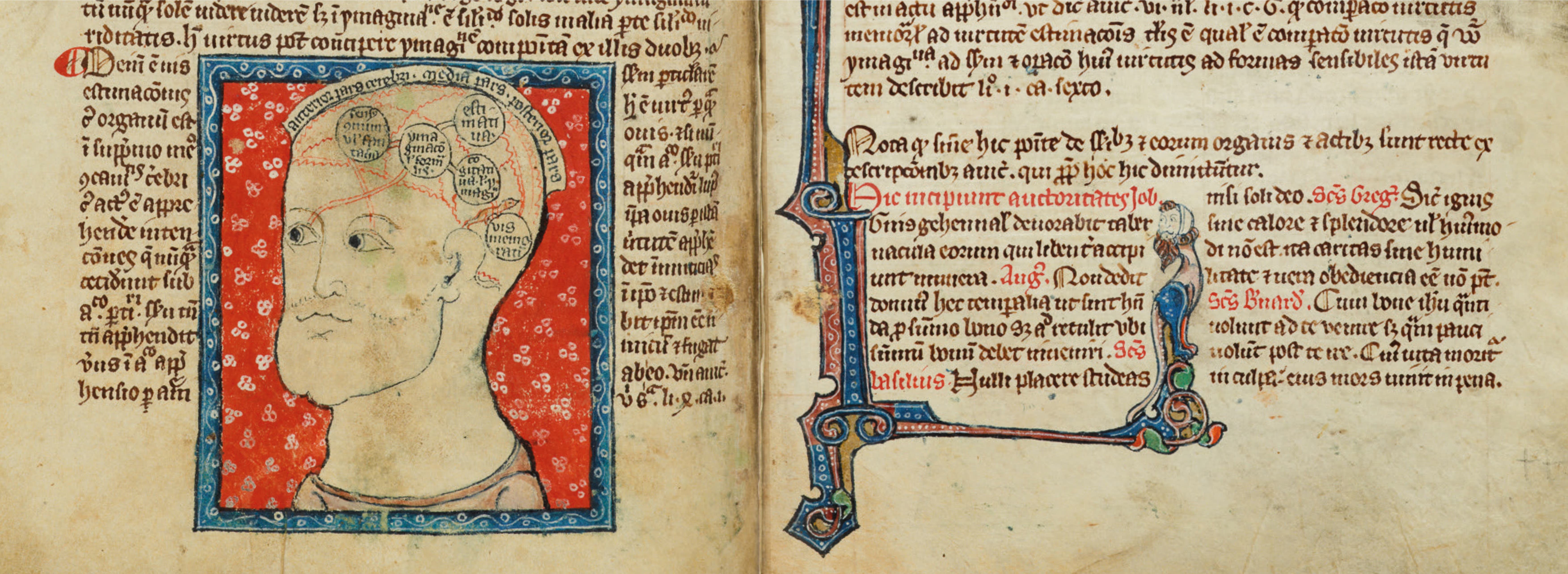
© Cambridge, Cambridge University Library, MS Gg.1.1, fol. 490v–491r.
MENS
Medieval Explorations in Neuro-Science (1050–1450): Ontology-Based Keyword Spotting in Manuscript Scans
Funding organization: Autonome Provinz Bozen – Südtirol
Abteilung Innovation, Forschung, Universität und Museen
Provincia Autonoma di Bolzano – Alto Adige
Ripartizione Innovazione, Ricerca, Università e Musei
Research Südtirol/Alto Adige 2019 – €299,786.68
Project duration: 2020–2023
Principal investigator: Univ.-Prof. Dr. Mario Klarer (University of Innsbruck)
Project partner: Prof. Diego Calvanese, PhD (Free University of Bozen-Bolzano)
Project description
“Why is it that men cannot remember what they did while they were drunk?” or “Why are men, in their old age, more likely than women to lose their hair?” These questions were directed at Albert of Saxony, the founding rector of the University of Vienna and later bishop of Halberstadt, during a quodlibet, a public university question-and-answer session, in the 1360s. What is remarkable is that the philosopher employed medical knowledge of the anatomy and physiology of the human brain in his answers. The discovery of Albert’s previously unknown quodlibeta is only the tip of the iceberg, with over one hundred new sources of medical brain anatomical discourses being discovered during the initial research for this project. These newly recovered texts show that medieval brain anatomy was not restricted to medical discourses alone, but on the contrary, shaped key aspects of all major areas of medieval learning, including soul theories in theology, epistemology in philosophy, and the role of imagination and memory in literature. Although the major classical and medieval anatomical texts by authorities on the brain and its neurology have been relatively well documented by history of medicine scholars, the legacy of medical brain concepts in medieval philosophy, theology, and literature—specifically in cross-disciplinary sources, such as quodlibeta, quaestiones disputatae, and commentarii—has received little or no attention thus far. Certain chapters of the history of medieval science have to undergo considerable revisions based on these preliminary finds, as well as the numerous future discoveries expected during the MENS project.
Unearthing Albert’s hitherto unknown brain anatomical references—which have, until now, received no mention in scholarship and which were lying dormant in the archives of the University of Innsbruck library—involved time-consuming manual manuscript screening. Using existing IT technology for in-depth searches of manuscript scans for specific content—in this case brain anatomical references—does not yet yield adequate results. Currently, the technology for keyword spotting of nontranscribed manuscript scans lacks the necessary knowledge graph or larger ontology a (human) scholar intuitively applies during such investigations. The aim to extract neurological content from medieval manuscripts also resembles the MENS project’s IT methodologies, which rely on state-of-the-art neural networks and IT ontologies modelled on the workings of the human mind.
The goal of the MENS project, therefore, is to build a paradigmatic case study for compiling and subsequently screening big data manuscript scans by using neural networks and formal ontologies. Had this proposed technology been available, hundreds of similar finds could have been unearthed by automatically screening other manuscripts within in the same amount of time required for “manually” working through Albert’s manuscript alone.